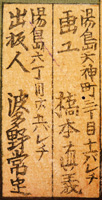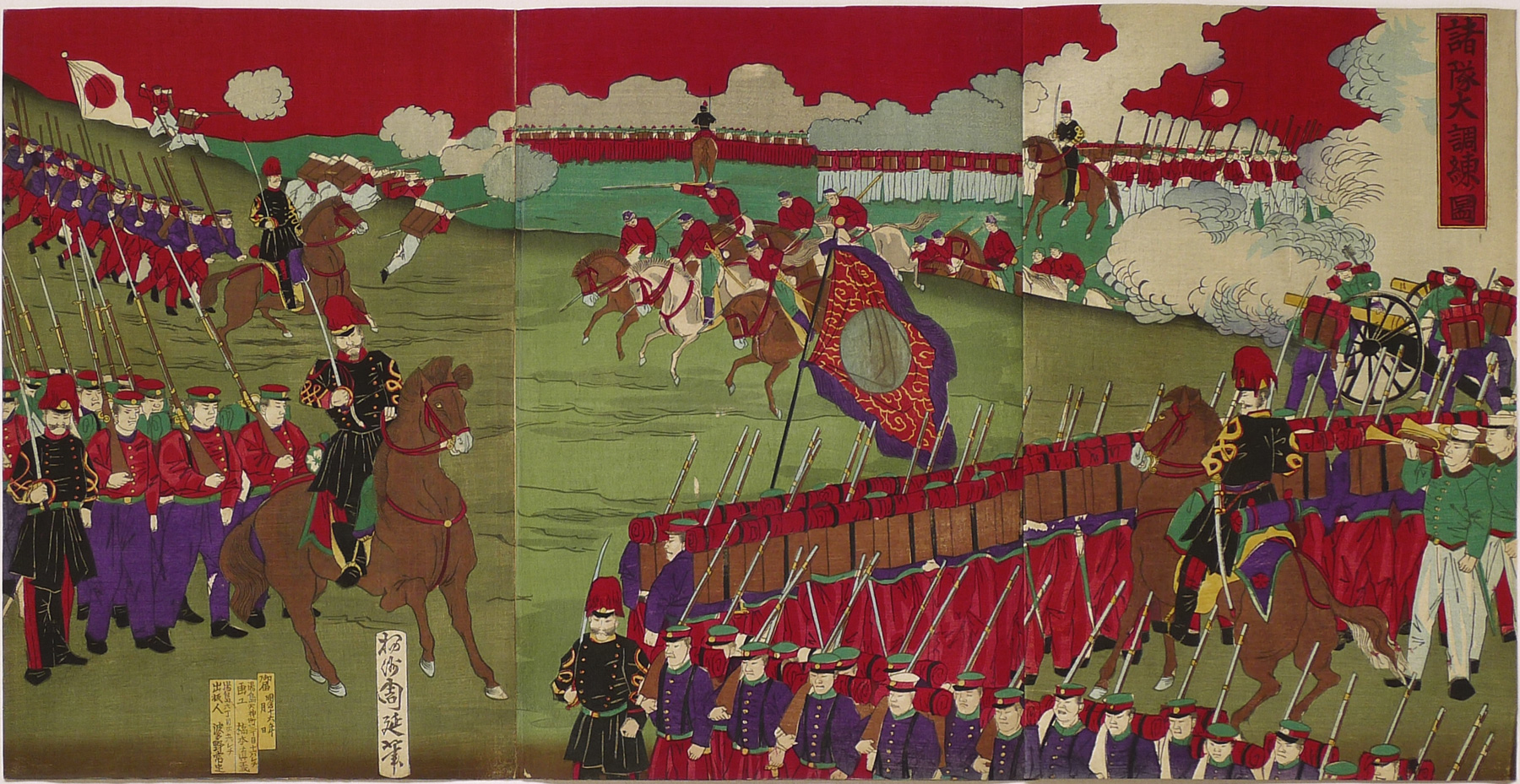About This Print
This print depicts one of the recurring military training exercises to prepare the recently enlarged army. In 1882, the year previous to the release of this print, the Emperor had issued the Imperial Rescript for Military Men, a code of conduct, and his Chief of the General Staff, Yamagata Aritomo informed Army Minister Oyama that the military was not meeting its conscription quotas and that the 40,000 soldiers were insufficient.Imperial Rescript for Military Men, January 4, 1882
Source: Emperor of Japan: Meiji and His World, 1852-1912, Donald Keene, Columbia University Press, 2002, p. 366-367.
On January 4, 1882 the emperor presented the ImperialRescript for Military Men, which clarified the role of the military as servantsof the Emperor. For some 700 years, the military ruled the country indisregard of the wishes of the imperial family, but by the 1830s and 1840s theshogunate was much weakened. It was justat this time that foreigners first posed a threat to Japanese security, causingEmperor Meiji’s grandfather and father deep distress. He had been more fortunate. When he came to the throne, still young andinexperienced, he was assisted by loyal men who made it possible to return tothe ancient system of government, rule by the emperor. During the last fifteen years, great changes had takenplace. The army and the navy were nowpersonally commanded by the emperor. Hedeclared to the military, “We are your commander in chief. We depend on you as Our trusted retainers;you look up to Us as your chief; our relations must be particularlyintimate. Whether We can or cannot protectthe nation, render thanks for the blessing of Heaven, and repay the debt we oweto Our ancestors depends on whether or not you carry out to the full yourduties as military men.” These statements are followed by a series of five commandsindicating what the emperor expected of the military. The first was that as members of themilitary, they devote their entire loyalty to their country. He asked rhetorically, “Is there anyone bornin our country who does not feel the desire to recompense his country?” It was not sufficient for a soldier to beskilled or learned. Unless he possessedthe spirit of “recompensing his country,” he would be no more than apuppet. A military man should considerhis duty to maintain loyalty as weighty as the mountains but think of death asbeing as light as a feather. The second injunction commanded lower ranks to show the samerespect toward their seniors that they would toward the emperor himself. In return, the upper ranks were commanded notto behave with arrogance or contempt toward lower ranks but to treat them withkindness. Above and below should join inservice to the emperor. The third injunction was devoted mainly to the importance ofcourage. Soldiers were warned that realcourage did not consist in recklessness; they were enjoined always to begoverned by the sense of duty, by steady spiritual strength, and by theirintelligence. The members of themilitary were commanded, moreover, to consider gentleness of the greatestimportance in their dealings with civilians; they must try always to earn theiraffection and respect. The fourth and fifth injunctions commanded the military tobe true to its words and to practice simplicity. The rescript was subsequently distributed widely among themilitary and, by General Ōyama’s command, printed at the head of the pocketnotebooks distributed annually for the next sixty and more years to soldiersand sailors, to be read, memorized, and obeyed. |
Print Details
| IHL Catalog | #864 |
| Title or Description | Illustration of the Great Training Maneuvers by Various Army Corps Shotai dai chōren no zu 諸隊大調錬ノ図 |
| Series | |
| Artist | Yōshū Chikanobu (1838-1912) |
| Signature | Yōshū Chikanobu hitsu 楊洲周延筆 |
| Seal | none |
| Publication Date |  |
| Publisher |  Left half: 出版人 波多野常定 [publisher Hatano Tsunesada] right column shows publisher's address Right half: 画工 橋本直義 [artist Hashimoto Naoyoshi (Chikanobu's family name)] right column shows artist's address. |
| Impression | excellent |
| Colors | excellent |
| Condition | good – three sheets joined together with heavy backing paper; trimmed to image |
| Genre | ukiyo-e; kaika-e |
| Miscellaneous | |
| Format | vertical oban triptych |
| H x W Paper | 13 3/4 x 27 3/8 in. (34.9 x 69.5 cm) entire triptych |
| Literature | |
| Collections This Print | Museum of Fine Arts, Boston 2000.35a-c |


